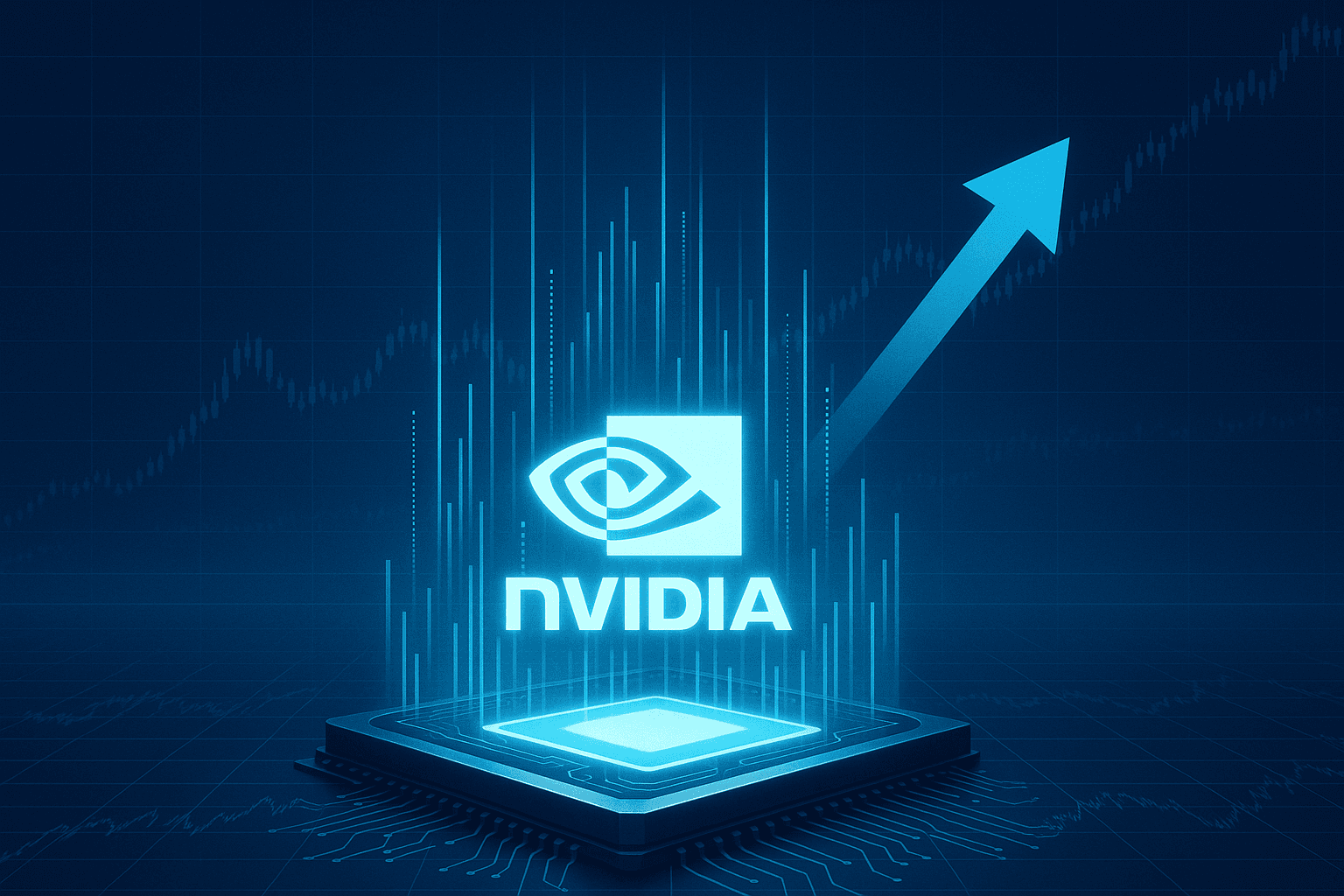Why this small Nvidia-backed stock is skyrocketing today

News Summary
Navitas Semiconductor (NASDAQ: NVTS), an Nvidia-backed company specializing in advanced gallium nitride (GaN) and silicon carbide (SiC) power semiconductors, saw its stock surge 33% in pre-market trading due to significant strides in its collaboration with Nvidia on next-generation 800-volt high-voltage DC (HVDC) AI factory architecture. This partnership positions Navitas as a key supplier of GaN and SiC power devices critical for Nvidia’s AI data centers, which demand higher power, efficiency, and scalability for AI workloads. Nvidia’s 800V DC power architecture represents a major leap from traditional 50V systems, enabling over 150% more power delivery through the same infrastructure while reducing losses and enhancing energy efficiency. Although commercial rollout of these advanced systems is not expected until 2027, the market is already reacting positively to Navitas’s strategic tie-up. The partnership not only validates Navitas’s technology but also provides strong market endorsement and potential for embedded supply chain integration within Nvidia’s AI infrastructure ecosystem. Navitas’s pure-play focus on GaN and SiC semiconductors enables rapid innovation and efficient scaling, differentiating it from larger, more diversified competitors. Furthermore, the company is ramping up manufacturing with partners like Powerchip for 8-inch wafer production, boosting capacity and cost efficiency, which strengthens its competitive edge in the burgeoning AI data center market.
Background
Navitas Semiconductor is a company focused on the development and production of gallium nitride (GaN) and silicon carbide (SiC) power semiconductors. These materials offer higher switching speeds, lower losses, and greater energy efficiency compared to traditional silicon-based semiconductors, making them crucial for high-power-density applications such as electric vehicles, renewable energy, consumer electronics, and data centers. Nvidia, a global leader in AI chip manufacturing, is actively building out its AI data center infrastructure, including its next-generation 800-volt high-voltage DC (HVDC) AI factory architecture. This architecture is designed to significantly boost data center energy efficiency and power delivery capabilities to support the escalating demands of AI computing. The collaboration comes amid a booming global AI industry, with demand for high-performance computing and efficient power solutions continually surging.
In-Depth AI Insights
What are the deeper strategic implications of Navitas's partnership with Nvidia for the broader AI supply chain? - This collaboration goes beyond mere technology supply; it signals Nvidia's potential move towards 'ecosystem lock-in' for critical components of its future AI infrastructure. By endorsing and deepening its partnership with Navitas, Nvidia may aim to secure and customize the supply of GaN and SiC power devices essential for its 800V HVDC architecture, thereby reducing reliance on generic semiconductor vendors. - It could also prompt other major AI infrastructure players (e.g., Microsoft, Google, Amazon) to re-evaluate their power management strategies and supplier relationships, seeking similar customized, high-efficiency solutions, thereby accelerating the adoption of GaN and SiC technologies in AI data centers. - This close partnership model could provide Navitas with a 'moat,' granting it significant first-mover advantage and market share in the coming years, while pressuring competitors focused on traditional silicon-based power solutions. Given that commercial rollout isn't until 2027, why is the market reacting so dramatically now? Is this forward-pricing justified? - The market's early reaction is driven by 'forward pricing' based on anticipated future revenue potential, particularly in the high-growth AI sector. Nvidia's endorsement and deep collaboration significantly de-risk the market acceptance and scaled deployment of Navitas's technology, painting a clear and credible future growth trajectory for investors. - This pricing is somewhat justified because AI data center infrastructure has long development cycles, and once a supplier is locked in, the partnership tends to be highly sticky. While 2027 seems distant, it's a relatively tight timeline for major infrastructure projects and core technology integration. - However, there's also a risk of over-optimism. Over the next two-plus years, technology roadmaps could evolve, competitive landscapes might intensify, and even macroeconomic conditions could shift unfavorably. Investors should be wary of valuations that excessively discount potential future uncertainties. Is Navitas's pure-play business model, focused solely on GaN and SiC, an advantage or disadvantage in the current market environment? - Advantage: Its pure-play nature allows Navitas to concentrate all R&D and production resources on innovating and optimizing GaN and SiC technologies, leading to leadership in performance, efficiency, and cost. This specialization becomes a core competency as AI data centers demand increasingly sophisticated power management. - Advantage: Securing a partnership with an industry giant like Nvidia validates its specialized approach and provides immense market exposure and potential orders. In rapidly evolving niche markets, pure-play specialists often attract investors focused on that specific domain. - Potential Disadvantage: A pure-play model also means its revenue and profitability are highly dependent on the expansion of the GaN and SiC markets and the success of its technology in specific applications. If market demand growth slows or a more disruptive alternative technology emerges, its business risk could be relatively higher. In contrast, diversified semiconductor companies can better spread risk.